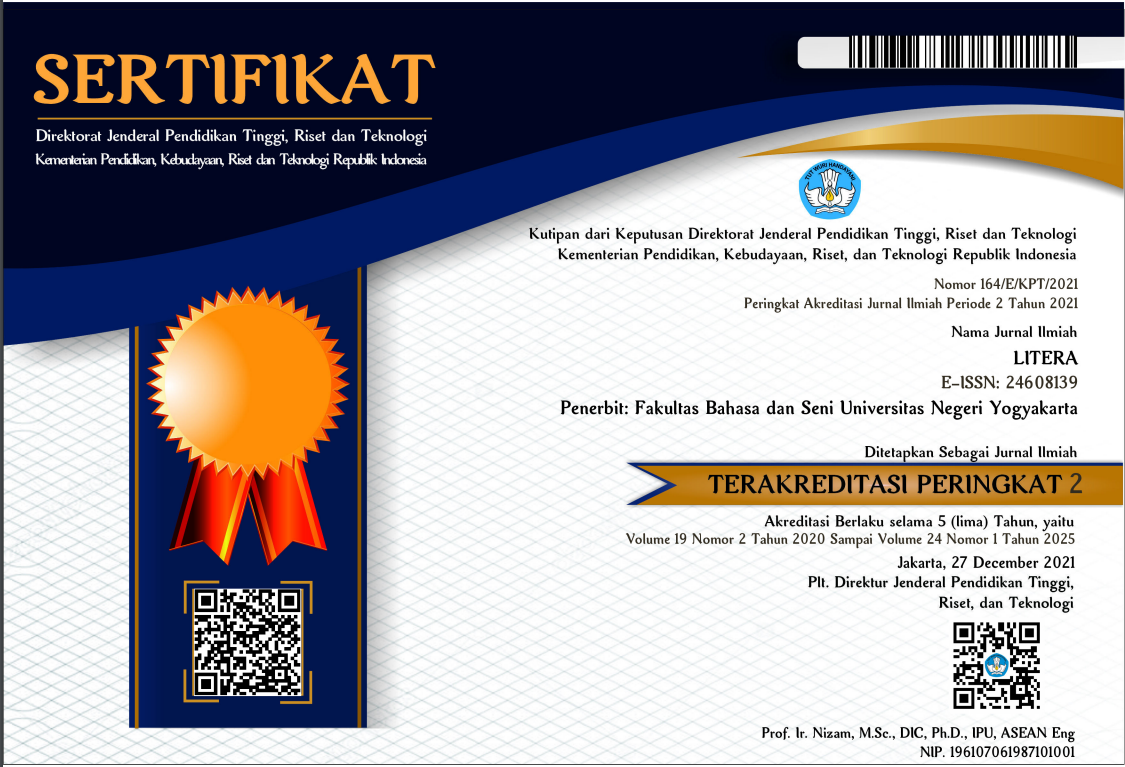PEMERTAHANAN BAHASA MUNA DI KABUPATEN MUNA SULAWESI TENGGARA
Abstract
Southeast Sulawesi. The data were collected using the ethnographic method by means
of observations and unstructured interviews. The analysis was referred to micro and
macrosociolinguistic theories. The findings are as follows. First, the population growth
does not support the survival of the Muna language because of the increasing number of
multiethnic newcomers. Second, the young generation’s mobility gives more space to the
use of Bahasa Indonesia. Third, the maintenance of the Muna Language is supported by
elder people in villages but it is not supported by educated families, multiethnic families,
elite groups, and school environments. Fourth, demographically, people aged 0 - 19 are not
active enough in using the Muna language, those aged 20 - 49 do not care about the use
of the Muna language, and those aged 50 or more still use the Muna language actively.
Full Text:
PDFDOI: https://doi.org/10.21831/ltr.v13i1.1915
Refbacks
- There are currently no refbacks.
______________________
__________________________________________________________________________________________________
Litera Journal is published by the Faculty of Languages, Arts, and Culture Universitas Negeri Yogyakarta in collaboration with Himpunan Sarjana Kesusasteraan Indonesia (HISKI)
The International Journal of Linguistic, Literature, and Its Teaching at http://http://journal.uny.ac.id/index.php/litera/ is licensed under a Creative Commons Attribution-ShareAlike 4.0 International License
__________________________________________________________________________________________________















